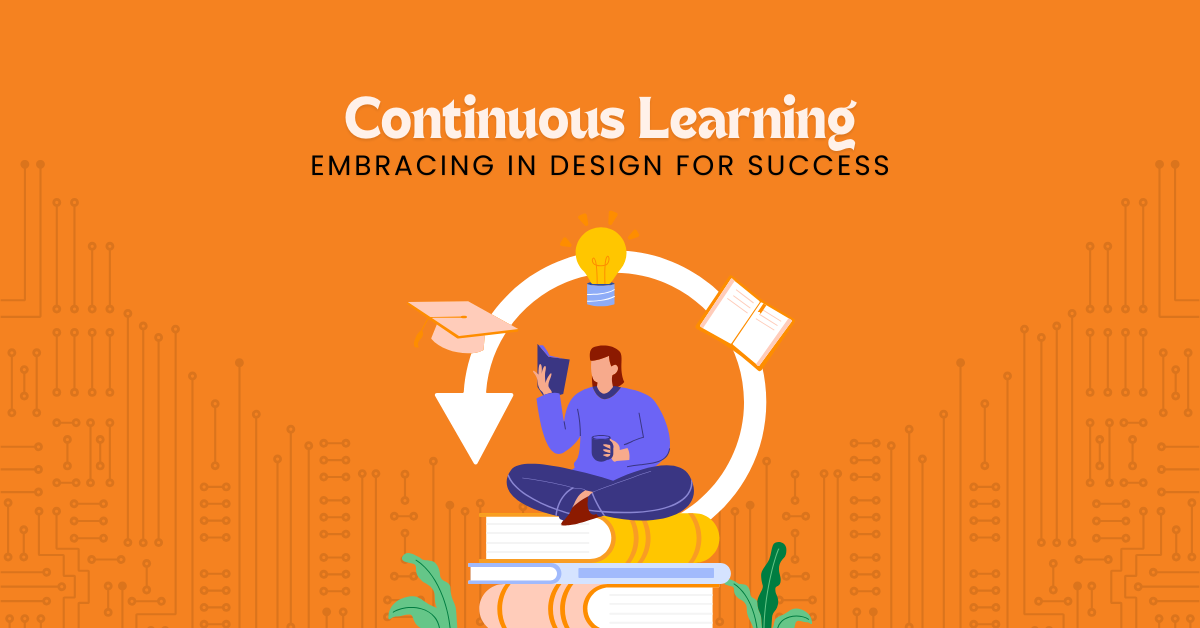Embracing Continuous Learning in Design for Career Success
May 30, 2024

Introduction
In the dynamic field of design, staying updated with the latest trends, technologies, and methodologies is crucial. The need for continuous learning in design stems from the rapid evolution of technology and the constant introduction of new tools and approaches. Whether you’re a graphic designer, a UX/UI specialist, or an interior designer, embracing lifelong learning is essential for keeping your skills relevant and your work innovative. This blog explores why continuous learning is pivotal in design and how it can significantly impact your career and professional growth.
The Imperative of Continuous Learning in Design
Adapting to Technological Advancements
The design industry is highly susceptible to technological changes. From new software and tools that streamline the creative process to innovative platforms that transform how designs are shared and consumed, technology continuously reshapes the landscape. Designers who commit to learning and adapting these new tools can maintain a competitive edge, deliver better work, and meet the evolving expectations of their clients and employers.
Staying Relevant in a Competitive Market
The design world is notoriously competitive. To stand out, designers must not only showcase great work but also demonstrate a proactive approach to learning and development. Continuous learning helps you expand your skill set and adapt to new design styles, which is crucial for staying relevant and appealing to a broad client base.
Enhancing Creativity and Innovation
Learning continuously feeds creativity. Exposure to diverse ideas, techniques, and perspectives sparks innovation and inspires unique design solutions. By staying curious and engaged with ongoing education, designers can continually refresh their creative approach and produce work that breaks new ground.
Strategies for Effective Continuous Learning in Design
Formal Education and Training
While not everyone can go back to school, many institutions offer part-time and online courses tailored to working professionals. These programs are designed to enhance skills in specific areas, such as digital illustration, web design, or user experience, and often provide valuable certifications.
Online Courses and Workshops
Platforms like Coursera, Udemy, and Skillshare offer a plethora of courses that cater specifically to designers. These resources make learning flexible and accessible, allowing designers to enhance specific skills at their own pace and on their own schedule.
Industry Conferences and Seminars
Attending industry conferences and seminars is another excellent way to stay informed about the latest trends and technologies. These events provide not only learning opportunities but also networking platforms where designers can exchange ideas and experiences.
Self-Directed Learning
In the age of the internet, self-directed learning has become more accessible. Engaging with blogs, podcasts, and YouTube channels dedicated to design can be equally educational. Designers can also benefit from practical experience through personal projects or freelancing, which allows them to apply new skills and techniques in real-world scenarios.
Peer Learning and Collaboration
Collaboration among designers can lead to significant learning opportunities. Working on team projects, participating in design sprints, and joining design communities can provide insights into different processes and problem-solving techniques, enriching your professional growth.
The Role of Employers in Supporting Continuous Learning
Organizations that recognize the importance of continuous learning often see higher creativity and productivity levels among their teams. Employers can support continuous learning by providing access to courses and training, encouraging conference attendance, and fostering a culture that values knowledge sharing and innovation.
Conclusion
For designers, continuous learning is the key to career longevity and success. As the field evolves, the willingness to adapt and learn can set you apart from the competition, enhance your creativity, and lead to more significant opportunities. By investing in your professional development, you ensure that your skills and techniques grow as you do, allowing you to remain at the cutting edge of design.

